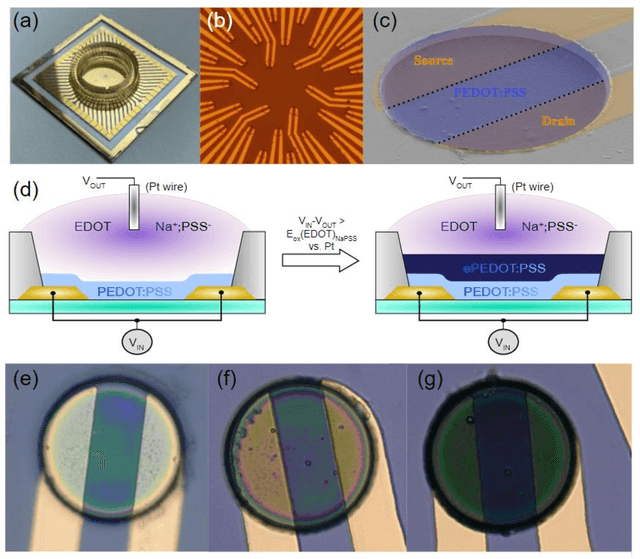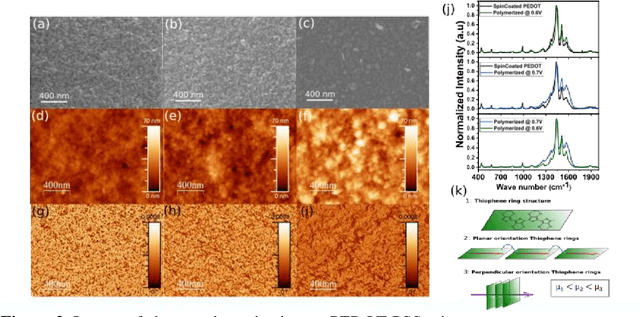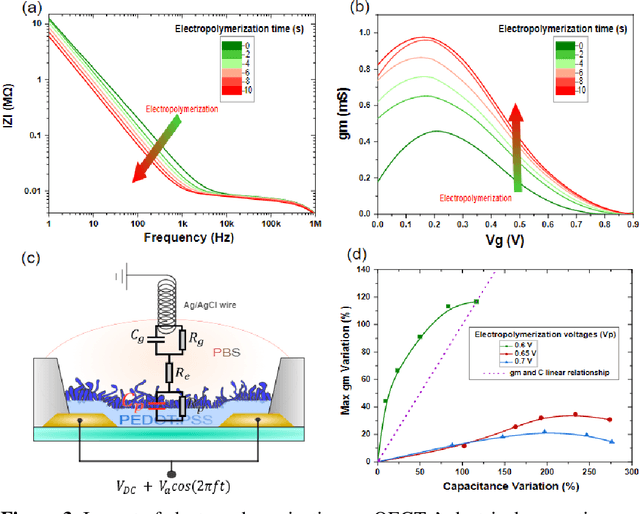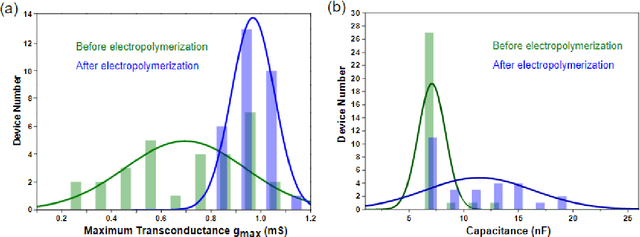Sebastien Pecqueur
A Temporal Filter to Extract Doped Conducting Polymer Information Features from an Electronic Nose
Jan 01, 2024Abstract:Identifying relevant machine-learning features for multi-sensing platforms is both an applicative limitation to recognize environments and a necessity to interpret the physical relevance of transducers' complementarity in their information processing. Particularly for long acquisitions, feature extraction must be fully automatized without human intervention and resilient to perturbations without increasing significantly the computational cost of a classifier. In this study, we investigate on the relative resistance and current modulation of a 24-dimensional conductimetric electronic nose, which uses the exponential moving average as a floating reference in a low-cost information descriptor for environment recognition. In particular, we identified that depending on the structure of a linear classifier, the 'modema' descriptor is optimized for different material sensing elements' contributions to classify information patterns. The low-pass filtering optimization leads to opposite behaviors between unsupervised and supervised learning: the latter one favors longer integration of the reference, allowing to recognize five different classes over 90%, while the first one prefers using the latest events as its reference to clusterize patterns by environment nature. Its electronic implementation shall greatly diminish the computational requirements of conductimetric electronic noses for on-board environment recognition without human supervision.
Bio-inspired adaptive sensing through electropolymerization of organic electrochemical transistors
Aug 30, 2021



Abstract:Organic Electrochemical Transistors are considered today as a key technology to interact with biological medium through their intrinsic ionic-electronic coupling. In this paper, we show how this coupling can be finely tuned (in operando) post-microfabrication via electropolymerization technique. This strategy exploits the concept of adaptive sensing where both transconductance and impedance are tunable and can be modified on-demand to match different sensing requirements. Material investigation through Raman spectroscopy, atomic force microscopy and scanning electron microscopy reveals that electropolymerization can lead to a fine control of PEDOT microdomains organization, which directly affect the iono-electronic properties of OECTs. We further highlight how volumetric capacitance and effective mobility of PEDOT:PSS influence distinctively the transconductance and impedance of OECTs. This approach shows to improve the transconductance by 150% while reducing their variability by 60% in comparison with standard spin-coated OECTs. Finally, we show how to the technique can influence voltage spike rate hardware classificationwith direct interest in bio-signals sorting applications.
 Add to Chrome
Add to Chrome Add to Firefox
Add to Firefox Add to Edge
Add to Edge